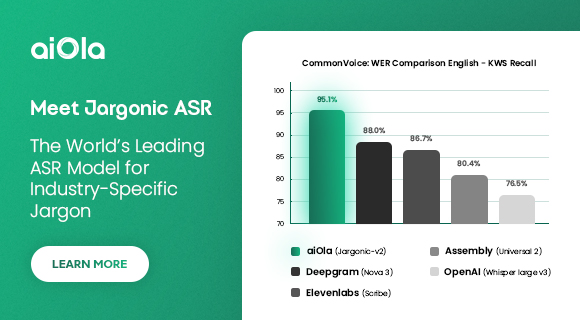The United States is settling for a tiny fraction of what it could have achieved through traditional free-trade agreements.

May 13, 2025, 10:10 AM ET
Last week, the Trump administration announced a “historic trade deal” with the United Kingdom. If by this the White House meant that the agreement is the first instance of a country reaching a deal to get out of President Donald Trump’s worldwide “Liberation Day” tariffs, then yes—it is, technically, historic. In colloquial terms, however, the only historic thing about this agreement is its flimsiness. If the U.K. deal is a model for deals yet to be struck with other nations, Trump will have little to show for the chaos and disruptions that his tariffs have unleashed—especially when compared with what America could have had instead.
The published terms of the U.K. deal provide clear and complete commitments to roll back tariffs on just three product categories—beef, ethanol, and automobiles—and even then, only partially. (British automobile exports, for example, will enjoy a reduced U.S. tariff of 10 percent, up to 100,000 units a year.) The precise treatment of other products has not yet been determined. Everything else, including nontariff barriers, customs clearance, procurement, intellectual property, and digital trade, will be negotiated later. (This explains why the word intend is used 17 times in the five-page agreement.)
At the same time, significant bilateral irritants remain. The U.K., for example, has kept in place regulatory barriers to U.S. agricultural products (such as chlorinated chicken and hormone-fed beef) and a “digital services tax” that disproportionately affects American tech giants. On the U.S. side, Trump’s new 10 percent “reciprocal” tariff will remain in effect on everything not carved out in the deal, meaning that the average effective U.S. tariff on goods from our close ally and new trade-deal partner are far higher today than the piddly 1 percent rate that was in place until recently. And because many of the agreement’s terms aren’t set, uncertainty remains for companies and investors in both countries, especially given Trump’s recent history of tearing up past trade deals whenever he feels like it.
The U.K. is a relatively small country with low trade barriers on, and good relations with, the United States, and it has long sought closer bilateral ties—including via formal free-trade-agreement negotiations begun in 2020—to bolster its tepid post-Brexit economy. In other words, reaching a trade deal doesn’t get much easier for the U.S., and yet this is all we’re getting. Such an outcome does not bode well for other negotiations with bigger trading partners that have more serious restrictions on U.S. trade and investment. The violent market response to Trump’s tariffs has pressured him to strike quick deals regardless of their merits—a dynamic other governments surely understand.
Michael Schuman: Trump’s weak position on trade
The new agreement looks even worse compared with the alternative. Trump, on his first day in office in 2017, abandoned the Trans-Pacific Partnership, which was specifically intended to boost U.S. ties with nations in China’s economic and geopolitical orbit by reducing barriers to exports and investment among countries party to the deal. After the U.S. bolted, it became known as CPTPP: the Comprehensive and Progressive Agreement for Trans-Pacific Partnership. The U.K. joined last year after committing to eliminate nearly all tariffs on the other 11 members’ products, while liberalizing and streamlining regulatory and other nontariff barriers to trade of both goods and services.
Thus, if Trump had simply stayed in the TPP in 2017 (perhaps with some modest tweaks to cover for his previous criticism of the deal) and championed its implementation by a Republican-controlled Congress, almost all tariffs on U.S. exports to the U.K. and other member countries would today be at or near zero. Nontariff barriers to American goods, services, digital trade, and investment would also have been reduced, and U.S. companies and consumers would be enjoying better access to CPTPP members’ exports.
The United States also would have gained from the agreement’s procedural terms. To join the CPTPP, new parties must commit to various requirements, including addressing current members’ specific trade concerns. This process is precisely how the U.K. joined the deal, and the U.S. could have leveraged it to get concessions on issues such as the agriculture-product barriers and digital-service taxes mentioned earlier. Because the agreement is detailed and codified into law, its benefits are stable and predictable. And because the CPTPP, like all traditional trade agreements, balances concessions among all parties and includes a formal process for settling disputes, it makes compliance more likely and enforcement easier than one-sided agreements; all parties have something to lose should things go south. (It was precisely this lack of balance that doomed the now-defunct “Phase One” agreement with China from Trump’s first term.)
David Frum: The ultimate bait and switch of Trump’s tariffs
Whatever minor gains U.S. companies might eventually see because of last week’s deal will be dwarfed by the geopolitical tensions and market chaos caused by Trump’s tariffs. Those tariffs have undermined U.S. exporters’ overseas competitiveness in several ways. They force U.S. companies to pay more than their foreign rivals for raw materials, parts, and equipment, which are about half of all U.S. imports. They subject American businesses to retaliation by foreign governments and consumers. And the tariff onslaught has pushed other countries to sign agreements among themselves and thus give their companies an even bigger advantage over boxed-out U.S. competitors. In fact, just days before the U.S.-U.K. agreement was announced, the British government signed a real, comprehensive deal with India that will eventually cut tariffs on 90 percent of goods while liberalizing trade in services, digital trade, and migration.
None of this bodes well for American companies looking to expand abroad, where 95 percent of the world’s consumers live.
Perhaps the new U.S.-U.K. deal will eventually morph into a more traditional and comprehensive trade deal of the sort that the two governments began in 2020. Until then, the agreement can be considered an improvement only over the post–Liberation Day status quo. Compared with the situation just months ago, however, the bilateral trade situation is markedly worse, and compared with what could have been, it’s downright tragic.
Support for this project was provided by the William and Flora Hewlett Foundation.
About the Author
Scott Lincicome is the director of general economics and trade at the Cato Institute and a senior visiting lecturer at Duke University Law School.

 1 month ago
3
1 month ago
3








 English (US) ·
English (US) ·